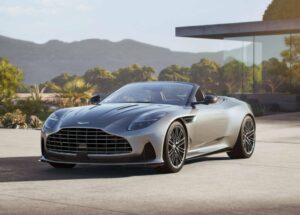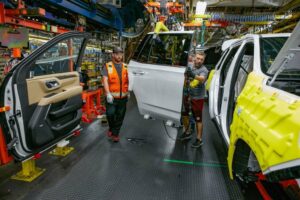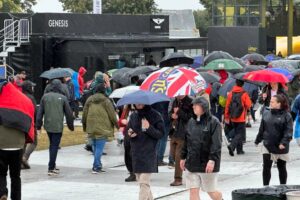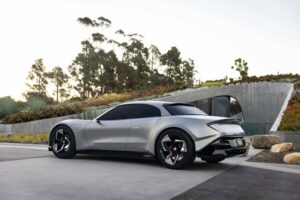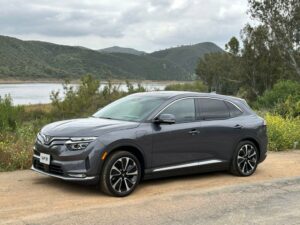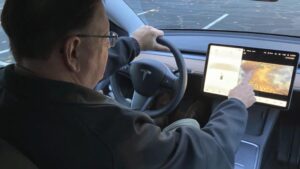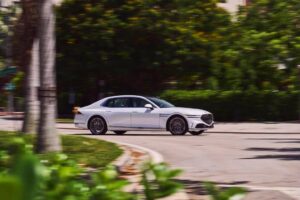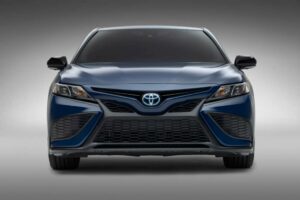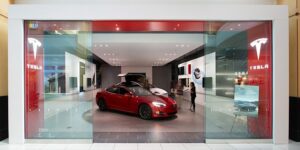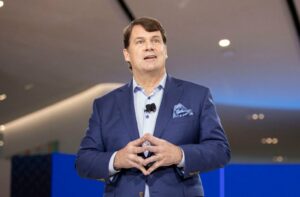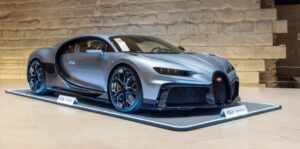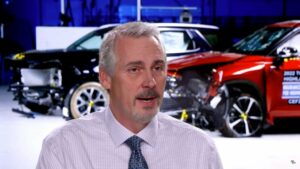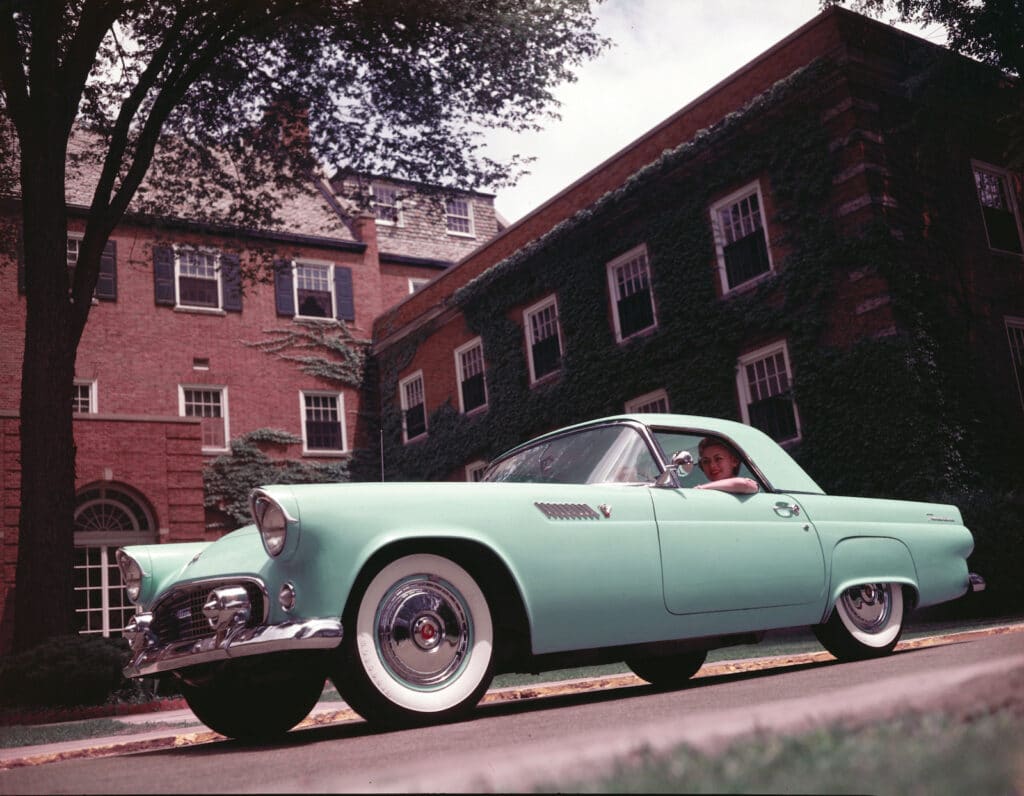
It’s a week when two automotive icons were born, both of whom would have an outsize influence on the automotive world: Ferdinand Porsche and Henry Ford II.
Books have been written on both men, and many stories, opinion pieces and analyses have examined their lives, actions and products. So consider this, at best, a brief primer on both, as they had an outsized influence on the industry they both loved.
Interestingly, both were Virgos, are thought to be logical, practical, systematic in their approach, and are detail-oriented. But in their aim for perfection, they can be overly critical and come off as judgmental. Or so horoscope mavens say.
Ferdinand Porsche
Even before being awarded Car Engineer of the Century by the Global Automotive Elections Foundation in 1999, Ferdinand Porsche was regarded as one of the greatest engineers in the annals of the automobile industry.
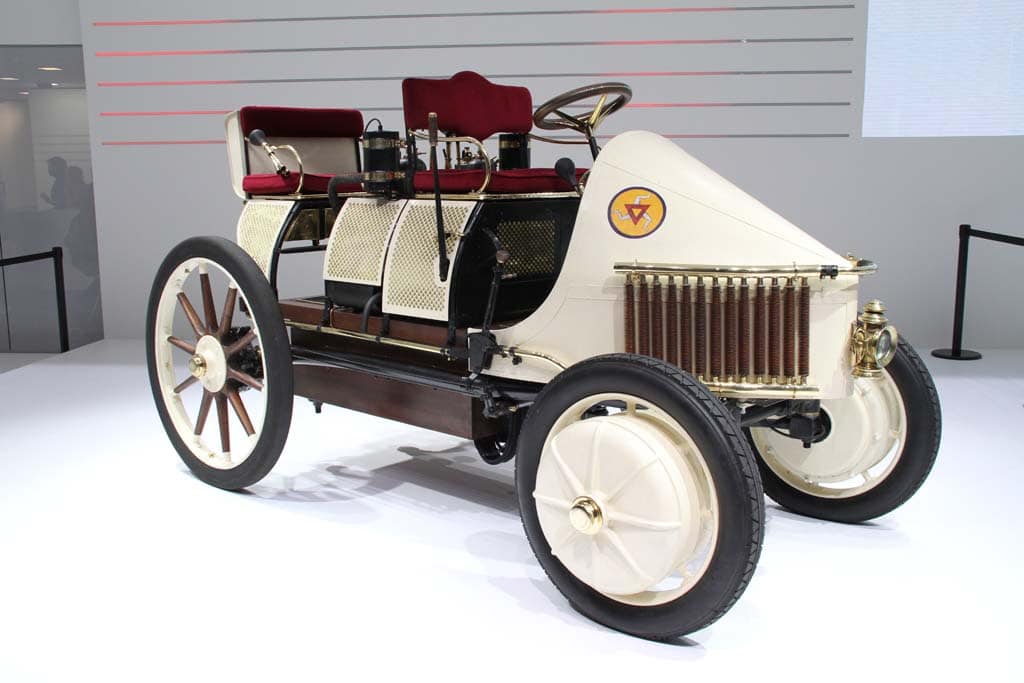
He was born this week in 1875 in the North Bohemian town of Maffersdorf, in what is now the Czech Republic.
Enthralled by electricity, Porsche attends evening classes in electrical engineering at a state-run trade school in the adjacent town of Reichenberg. He installs electricity in his home by 1893 before moving to Vienna, where he works as a technician at Vereinigte Elektrizitäts-AG and creates an electric wheel hub motor.
He begins working for Lohner-Werke in 1899, the largest coachbuilding facility in Austria, where he creates the all-wheel-drive Lohner-Porsche Semper Vivus, which is Latin for “always living.” The vehicle’s configuration combines two-wheel hub motors with two one-cylinder combustion engines to power a generator that continuously charges the batteries while it is in motion, gave rise to its name.
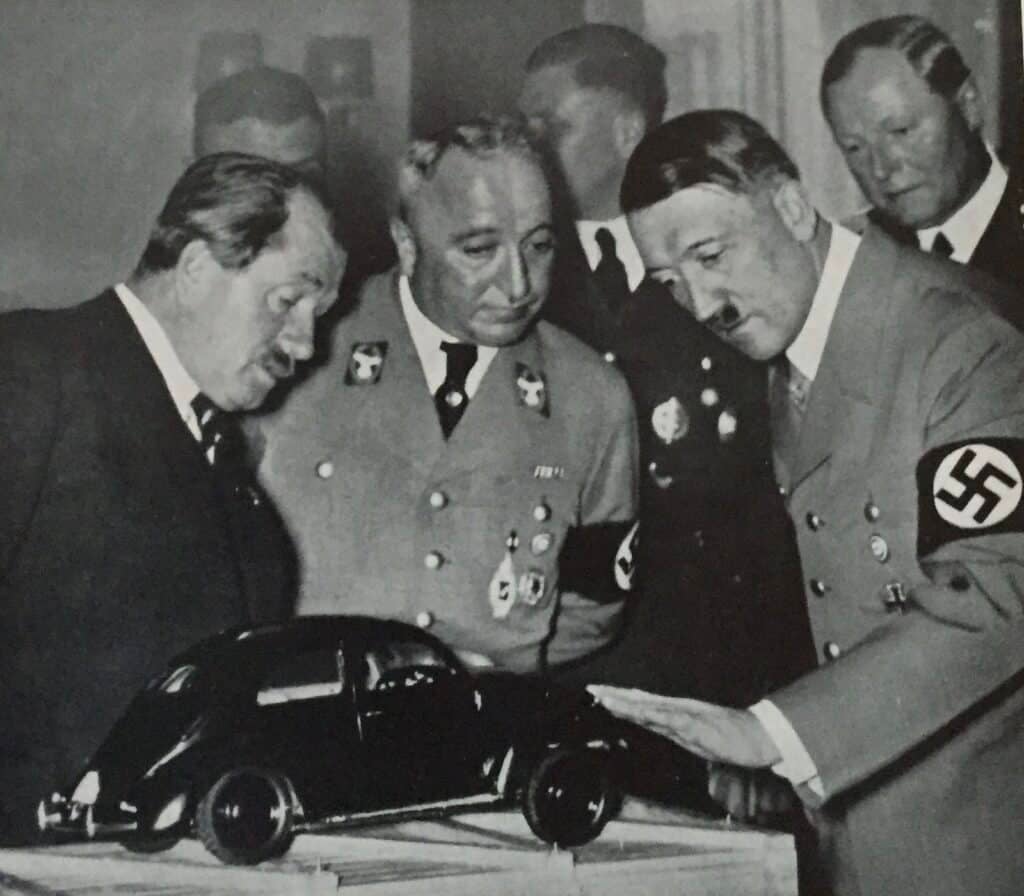
In 1905, Porsche moves on to Austro-Daimler as head designer, pursuing his passion in aircraft engines, and rising to become managing director by the end of World War I. But as Austro-Daimler’s fortunes deteriorate, Porsche joins Daimler-Benz as a designer in 1923. There, he works on the famous SSK and SSKL racecars.
When his contract at Daimler is not renewed, Porsche briefly joins the Steyr-Werke in Upper Austria before establishing his own design firm, Dr. Ing. h. c. F. Porsche GmBH in Stuttgart in 1931.
The firm develops vehicles for Zündapp, NSU, the mid-engine Auto-Union V-16 race cars and, most famously, the Volkswagen, as well as military projects during World War II. His war work led to U.S. forces to imprison Porsche in France at war’s end through 1947. Once released, he goes to Gmund where he works with his son, Ferry, on a new two-seat sports car initially dubbed the Volkswagen Sport.
Unveiled at the Geneva International Motor Show in March 1949, the air-cooled, rear-engine Porsche 356 heralds the beginning of a legendary new brand. After 44 Coupes and 8 Cabriolets are constructed in Gmund, permission is granted for the company to return to its Zuffenhausen facility near Stuttgart.
Porsche would die of a stroke on Jan. 31, 1951, at the age of 75.
Henry Ford II
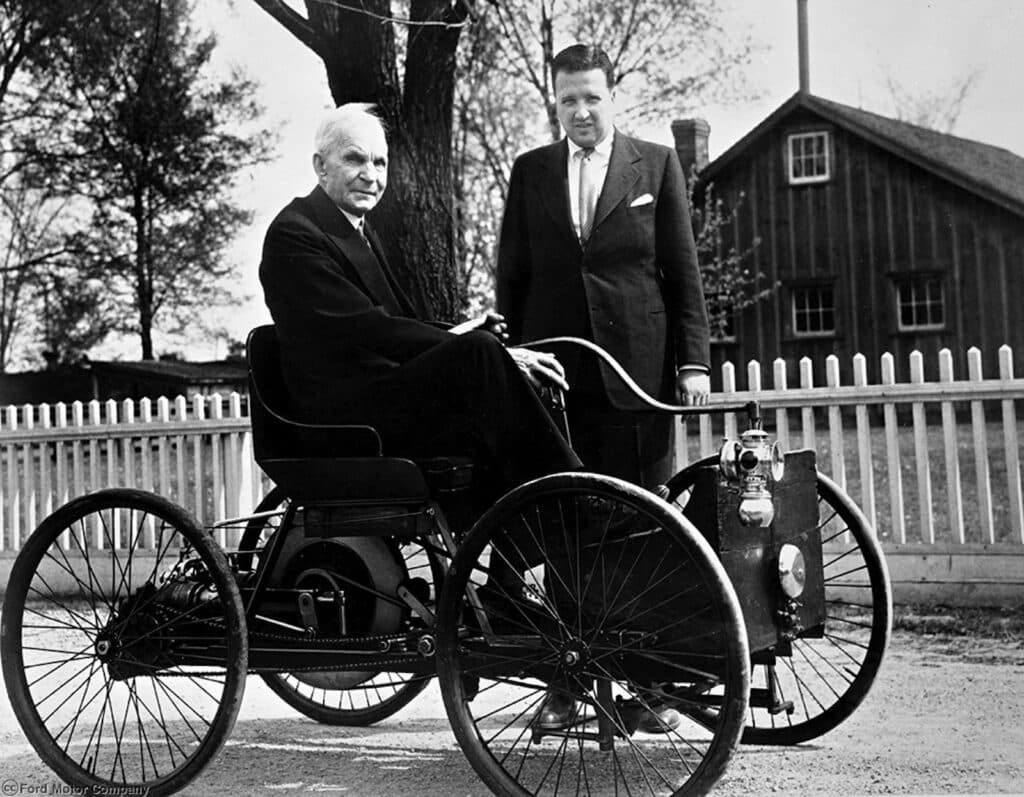
The oldest son of Edsel Ford, Henry Ford II was an automotive blue blood, and one of America’s great industrialists, who would lead the Ford Motor Co. for 34 years. Known as The Deuce, he is born to Edsel and Eleanor Clay Ford in Detroit this week in 1917.
He would go on to attend Yale University before leaving without graduating, after paying a classmate to write a paper for him. He joins the family firm that his grandfather founded in 1903 and his now run by his father before joining the Navy the following year.
But when his father unexpectedly dies from stomach cancer in 1943 at the age of 49, 26-year-old Henry, a naval lieutenant, receives word that the Secretary of the Navy is releasing him early from his commission so that he can go home to rejoin the family firm.
The government is concerned that Ford Motor Co. won’t be able to create the amphibious vehicles and planes required for the war effort. At the time, his grandfather, 80, had reassumed control of the automaker following his son’s death, nearly driving it into bankruptcy. Henry II demands, and gets, complete control of the company, joining the firm as Vice-President. By 1945, he is named company President.
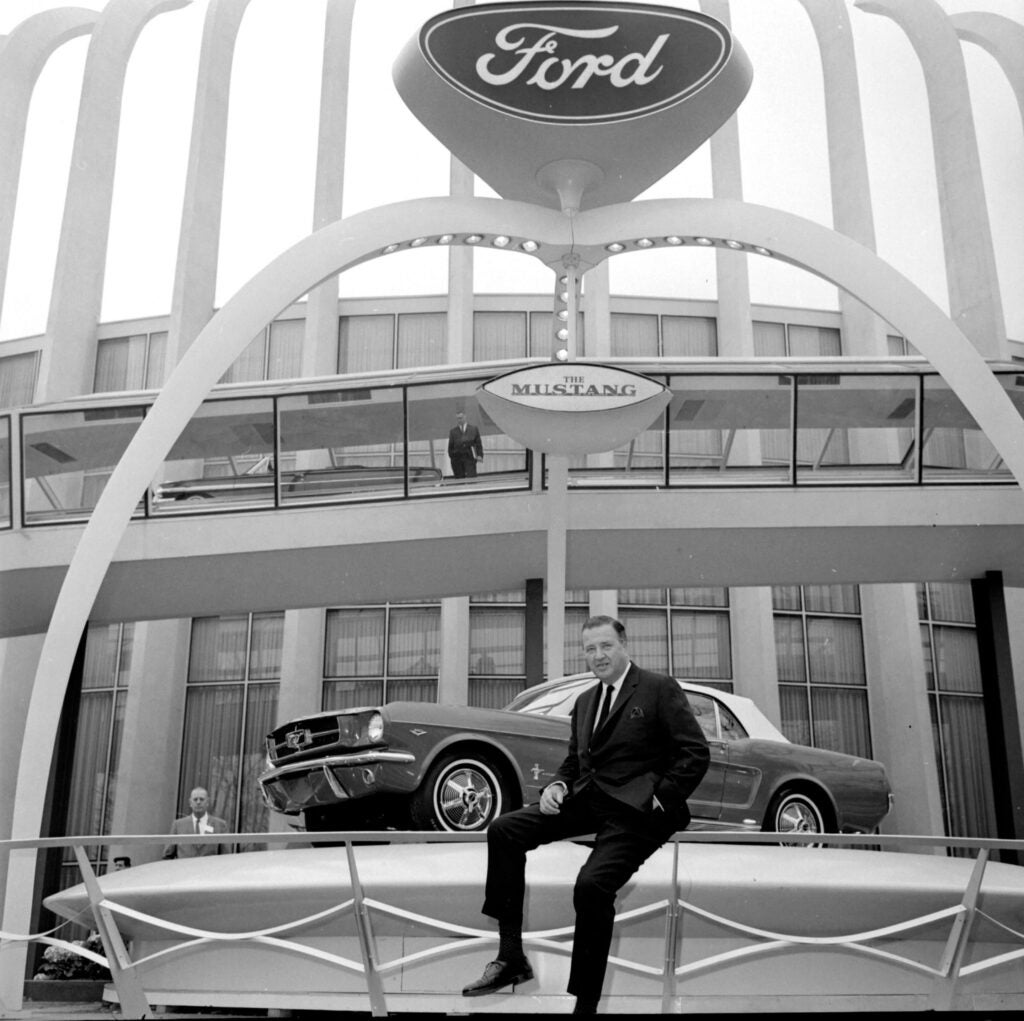
At the time, Ford Motor is losing $10 million a month; that’s $177.7 million today. He goes on to hire a team of former Air Force officers who establish modern professional management at Ford for the first time. The company goes on to produce such iconic cars as the Thunderbird, Mustang, Bronco, and notoriously, the Edsel and Pinto.
Some of his managers would leave the automaker, establishing successful careers elsewhere. The most notable of them being Robert S. McNamara, Secretary of Defense under Presidents Kennedy and Johnson and later head of the World Bank; Lee Iacocca, chairman of Chrysler Corp.; and Charles Thornton, who co-founded Litton Industries.
He would marry three times, starting with Anne McDonnell in 1940, who he divorced in 1964. The following year, he marries Maria Cristina Vettore Austin, who he divorces in 1980, before marrying Kathleen DuRoss that same year.
By the time he steps aside as CEO in 1979, Ford’s earns $1.6 billion, the second-best year in the company’s history. Through it all, he remains his own man, responding to executives who might challenge him by simply saying. “My name is on the building.”
Among Henry II’s last acts is to name the first non-family member, Philip Caldwell, as his successor at Ford. Henry II remains with the company until retirement this week in 1982. He dies of pneumonia in Detroit in September 1987 at the age of 70.
Through it all, he follows the advice, and co-opts the expression of 19th-century British Prime Minister Benjamin Disraeli: “Never complain. Never explain.”
Words to live by.
- SEO Powered Content & PR Distribution. Get Amplified Today.
- PlatoData.Network Vertical Generative Ai. Empower Yourself. Access Here.
- PlatoAiStream. Web3 Intelligence. Knowledge Amplified. Access Here.
- PlatoESG. Automotive / EVs, Carbon, CleanTech, Energy, Environment, Solar, Waste Management. Access Here.
- PlatoHealth. Biotech and Clinical Trials Intelligence. Access Here.
- ChartPrime. Elevate your Trading Game with ChartPrime. Access Here.
- BlockOffsets. Modernizing Environmental Offset Ownership. Access Here.
- Source: https://www.thedetroitbureau.com/2023/09/the-rearview-mirror-the-birth-of-two-automotive-legends/
- :is
- :not
- :where
- $10 million
- 1949
- 1951
- 1999
- 31
- 49
- 7
- 70
- 75
- 8
- 80
- a
- Able
- actions
- acts
- adjacent
- advice
- After
- age
- aim
- AIR
- Air Force
- aircraft
- All
- an
- and
- approach
- ARE
- arguably
- AS
- At
- attend
- austin
- Austria
- automobile
- automotive
- awarded
- Bank
- Bankruptcy
- batteries
- BE
- become
- been
- before
- Beginning
- being
- Benjamin
- BEST
- Billion
- birth
- blood
- Blue
- born
- both
- brand
- briefly
- British
- Building
- Bureau
- but
- by
- caldwell
- CAN
- Cancer
- car
- careers
- cars
- Century
- ceo
- chairman
- challenge
- charges
- Charles
- chrysler
- classes
- CO
- combines
- come
- commission
- company
- Company’s
- complete
- concerned
- Configuration
- Consider
- continuously
- contract
- control
- Corp
- create
- creates
- critical
- Czech
- czech republic
- Daimler
- Death
- Defense
- demands
- Design
- Designer
- develops
- Director
- Disraeli
- dr
- driving
- dubbed
- during
- Early
- effort
- Elections
- Electric
- electrical engineering
- electricity
- elsewhere
- end
- engineer
- Engineering
- Engineers
- Engines
- establish
- establishing
- evening
- executives
- Explain
- expression
- Facility
- fair
- family
- famous
- famously
- Firm
- First
- first time
- following
- follows
- For
- Force
- Forces
- Ford
- Former
- fortunes
- Foundation
- Founded
- France
- from
- generator
- Geneva
- Global
- GmBH
- Go
- Goes
- Government
- granted
- great
- greatest
- had
- Have
- he
- head
- henry
- henry ford
- heralds
- him
- hire
- his
- history
- Home
- HTTPS
- Hub
- Hybrid
- i
- iconic
- icons
- ii
- in
- industries
- industry
- influence
- ING
- initially
- International
- into
- IT
- ITS
- Jan
- Johnson
- joining
- Joins
- jpg
- known
- largest
- Last
- later
- Latin
- lead
- Leave
- leaving
- Led
- Lee
- left
- legendary
- Legends
- live
- Lives
- living
- logical
- losing
- loved
- man
- management
- Managers
- managing
- Managing Director
- many
- March
- maria
- marrying
- max-width
- member
- Men
- might
- Military
- million
- mirror
- Modern
- Month
- most
- motion
- Motor
- Motors
- moves
- moving
- name
- Named
- Near
- nearly
- never
- New
- New York
- North
- notable
- now
- of
- off
- officers
- oldest
- on
- once
- ONE
- Opinion
- or
- overly
- own
- Paper
- passion
- paying
- perfection
- permission
- pieces
- Pinto
- Planes
- plans
- plato
- Plato Data Intelligence
- PlatoData
- pneumonia
- Porsche
- power
- Practical
- president
- Presidents
- Prime
- prime minister
- primer
- produce
- Products
- professional
- projects
- Race
- receives
- regarded
- released
- releasing
- remains
- renewed
- Republic
- required
- responding
- retirement
- return
- Reviews
- right
- Rise
- rising
- ROBERT
- Run
- s
- same
- say
- saying
- School
- secretary
- September
- show
- simply
- So
- son
- Sport
- Sports
- Starting
- Steps
- Stories
- successful
- such
- team
- that
- The
- the world
- their
- Them
- There.
- they
- this
- this week
- thought
- three
- Through
- time
- times
- to
- today
- trade
- two
- u.s.
- under
- university
- until
- used
- Vehicles
- volkswagen
- war
- was
- week
- WELL
- were
- What
- What is
- Wheel
- when
- which
- while
- WHO
- with
- without
- Word
- Work
- working
- works
- world
- World Bank
- world’s
- would
- write
- written
- year
- years
- york
- zephyrnet

